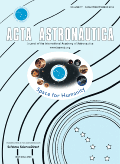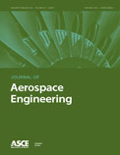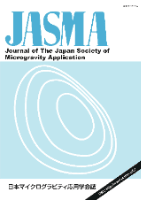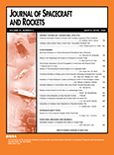
Chinese Space Science and Technology
metrics 2024
Advancing Knowledge in Aerospace Engineering
Introduction
Chinese Space Science and Technology is a pivotal journal dedicated to advancing the field of space engineering and technology, published by the esteemed Chinese Academy of Space Technology. With an ISSN of 1000-758X, this publication serves as a significant platform for cutting-edge research from China and around the globe, spanning vital intersections of Aerospace Engineering, Electrical and Electronic Engineering, and Materials Science. As evidenced by its Q3 ranking in 2023 across these categories, the journal consistently showcases innovative studies that contribute to the development of space technology, thereby impacting both theoretical frameworks and practical applications in the industry. Researchers and professionals will find valuable insights within its pages, while students can enrich their educational journey through its wealth of knowledge. Though primarily published in print, the journal continues to foster collaboration and engagement among the academic community, offering a glimpse into the future of space exploration and technological advancements through its relevant and timely content.
Metrics 2024
 0.24
0.24 0.50
0.50 0.50
0.50 15
15Metrics History
Rank 2024
Scopus
IF (Web Of Science)
JCI (Web Of Science)
Quartile History
Similar Journals

TRANSACTIONS OF THE JAPAN SOCIETY FOR AERONAUTICAL AND SPACE SCIENCES
Fueling the Future of Aerospace EngineeringTRANSACTIONS OF THE JAPAN SOCIETY FOR AERONAUTICAL AND SPACE SCIENCES is a distinguished journal published by the Japan Society for Aeronautical and Space Sciences, focusing on the latest advancements and research in the fields of aerospace engineering and space and planetary science. With a broad range covering theoretical studies, practical applications, and experimental research, this journal serves as a vital platform for researchers, professionals, and students keen to explore the intricacies of aeronautics and space technologies. Although currently closed to open access, the journal maintains a significant presence in the academic community, boasting a 2023 Scopus ranking of Q3 in both of its respective fields and offering insights that contribute to ongoing discussions and innovations in aerospace. Since its inception in 1969 and with publications extending to 2024, the journal not only reflects the evolving landscape of aeronautics and space sciences but also encourages discourse that paves the way for future breakthroughs. For your engagement and contributions to this dynamic field, the TRANSACTIONS OF THE JAPAN SOCIETY FOR AERONAUTICAL AND SPACE SCIENCES stands as an essential resource.

International Journal of Aeronautical and Space Sciences
Pioneering Insights in Aerospace EngineeringThe International Journal of Aeronautical and Space Sciences, published by Springer, is a prominent platform dedicated to advancing research and innovation in the fields of Aerospace Engineering, Control and Systems Engineering, Electrical and Electronic Engineering, and Materials Science. With an ISSN of 2093-274X and an E-ISSN of 2093-2480, the journal has established itself as a vital resource since its inception in 2011, currently offering insights that span a wide range of contemporary challenges and technological advancements in aeronautics and space exploration. Ranking in the Q2 category across multiple disciplines, including Aerospace and Control Engineering, signifies its recognized impact and quality within the academic community. Although not an open-access journal, it remains accessible to researchers, professionals, and students seeking to enhance their understanding of complex aerospace systems and their applications. The journal’s commitment to publishing high-quality research makes it indispensable for those aiming to contribute to, or stay informed about, the evolving landscape of aerospace technology.

New Space-The Journal of Space Entrepreneurship and Innovation
Navigating the Nexus of Business and AerospaceNew Space - The Journal of Space Entrepreneurship and Innovation is a pivotal publication dedicated to advancing the field of aerospace through innovative research and practical insights. Published by Mary Ann Liebert, Inc., this journal serves as a crucial platform for scholars, engineers, and entrepreneurs interested in the burgeoning sectors of space technology and commercial space endeavors. With an ISSN of 2168-0256 and an E-ISSN of 2168-0264, New Space explores the intersection of engineering, sustainability, and business within the aerospace industry. The journal's impact is highlighted by its Q3 ranking in multiple categories, including Aerospace Engineering and Astronomy and Astrophysics, signifying its relevance in contemporary research dialogues. Although currently closed access, the journal's dedication to fostering innovations is clear as it addresses critical topics from safety and risk management to energy technologies and tourism in space contexts. Researchers and professionals seeking to influence the future of space entrepreneurship will find valuable content and a collaborative community within these pages, making New Space an essential resource in its field.

Space Science and Technology-Kosmicna Nauka i Tehnologia
Pioneering discoveries in space science and technology.Space Science and Technology-Kosmicna Nauka i Tehnologia is an esteemed journal dedicated to advancing knowledge in the fields of Aerospace Engineering and Space and Planetary Science. Published by the well-regarded PUBLISHING HOUSE AKADEMPERIODYKA in Ukraine, this journal serves as a vital platform for researchers, professionals, and students to share groundbreaking findings and innovative technologies related to space exploration and engineering techniques. Since its establishment in 2019, Space Science and Technology has contributed significantly to the academic discourse in its category, currently holding a Q4 quartile ranking in both Aerospace Engineering and Space and Planetary Science as of 2023. Although it does not offer open-access publication, its listed ISSN (1561-8889) and E-ISSN (2518-1459) ensure wide accessibility to its published content. As the journal continues its journey from 2019 to 2024, it strives to enhance its impact and H-index while fostering collaboration and knowledge dissemination across the global space science community.

ACTA ASTRONAUTICA
Exploring the Frontiers of Aerospace InnovationACTA ASTRONAUTICA is a premier journal in the field of aerospace engineering, dedicated to advancing knowledge in space exploration and technology. Published by PERGAMON-ELSEVIER SCIENCE LTD in the United Kingdom, this journal boasts a prestigious Q1 ranking within its category as of 2023, positioning it in the top tier of aerospace engineering publications. With an ISSN of 0094-5765 and an E-ISSN of 1879-2030, ACTA ASTRONAUTICA has been a crucial resource for researchers and professionals since its inception in 1974, continuing to publish cutting-edge research through to 2024. The journal focuses on a wide range of topics, from orbital mechanics and spacecraft design to astronautics and planetary science, aiming to inspire innovation and facilitate the exchange of ideas among scholars, industry experts, and students. ACTA ASTRONAUTICA is ranked 19th out of 153 in its field, highlighting its importance and influence within the aerospace community. Researchers seeking a reputable platform to share their findings will find this journal to be an essential part of the academic discourse in aerospace engineering.

Journal of the Korean Society for Aeronautical and Space Sciences
Unveiling Breakthroughs in Space ScienceThe Journal of the Korean Society for Aeronautical and Space Sciences is a dedicated platform for the dissemination of cutting-edge research in the fields of aerospace engineering and space sciences. Published by the esteemed Korean Society for Aeronautical & Space Sciences, this journal aims to bring together innovative findings and technological advancements from around the globe, thereby contributing to the ongoing development of the aerospace sector. Operating from South Korea, the journal holds an ISSN of 1225-1348 and an E-ISSN of 2287-6871, catering to both print and digital scholarly communication. Although categorized in Q4 within the Aerospace Engineering segment and ranked 139 out of 153 on Scopus, the journal plays a crucial role in fostering research collaboration and knowledge exchange among professionals, researchers, and students alike. With converged years from 2019 to 2024, it continuously seeks to enhance its contributions to the academic community through rigorous peer review and publication of original research. Given the evolution of aerospace technologies, this journal is vital for anyone involved in aeronautical research, ensuring that their work reaches the right audience.

JOURNAL OF AEROSPACE ENGINEERING
Exploring the frontiers of aerospace engineering excellence.JOURNAL OF AEROSPACE ENGINEERING, published by the American Society of Civil Engineers (ASCE), is a premier scholarly journal that serves as an essential resource for engineers and researchers in the aerospace engineering domain. With an ISSN of 0893-1321 and an E-ISSN of 1943-5525, this journal has been dedicated to advancing knowledge since its inception in 1988 and will continue to do so through to 2024. The journal is categorized in the Q2 quartile across multiple engineering disciplines, including Aerospace Engineering, Civil and Structural Engineering, Materials Science, and Mechanical Engineering, reflecting its reputable standing in the community. The impact factor speaks to its influence and relevance, making it a critical reference for ongoing research and innovations. Although this journal does not offer open access, it ensures that its content is comprehensive, engaging, and peer-reviewed, targeting a diverse audience of professionals, academics, and students involved in the fields of aerospace engineering and related disciplines. The journal actively contributes to shaping future engineering practices, showcasing cutting-edge research and fostering collaboration among discipline experts.

Space: Science & Technology
Transforming Ideas into Aerospace RealitiesSpace: Science & Technology is a premier, open-access journal published by the American Association for the Advancement of Science, dedicated to advancing knowledge in the rapidly evolving fields of aerospace engineering and space sciences. Since its inception in 2021, the journal has rapidly established itself as a vital resource, achieving an impressive Q1 ranking in Aerospace Engineering and Q2 ranking in Space and Planetary Science as of 2023. With a Scopus rank placing it 45th out of 153 in Aerospace Engineering and 47th out of 104 in Space and Planetary Science, it serves as a critical platform for researchers, engineers, and students alike to disseminate their findings and engage with the latest developments in their field. The journal encourages innovative research articles, technical notes, and reviews that push the boundaries of what's possible in space exploration and technology. With its commitment to open access since 2021, Space: Science & Technology ensures that pioneering research is readily available to a global audience, promoting collaboration and knowledge sharing in an increasingly interconnected scientific community.

International Journal of Microgravity Science and Application
Exploring the Frontiers of Microgravity ScienceInternational Journal of Microgravity Science and Application is a pivotal academic publication dedicated to advancing the understanding and applications of microgravity phenomena across a plethora of scientific disciplines. Published by the Japan Society for Microgravity Application, this journal serves as a vital platform for researchers and practitioners aiming to explore the complexities and unique opportunities presented by microgravity environments. While primarily focused on the fields of materials science, fluid dynamics, and biological studies under microgravity conditions, the journal fosters interdisciplinary discussions and innovative research endeavors that can translate into real-world applications and technological advancements. Despite its non-open access model, the journal continues to be an invaluable resource for those engaged in space research and microgravity applications, thus contributing significantly to the scientific community's understanding of these essential topics.

JOURNAL OF SPACECRAFT AND ROCKETS
Propelling Innovation in Aerospace Research.The Journal of Spacecraft and Rockets, published by the American Institute of Aeronautics and Astronautics, serves as a premier platform for disseminating cutting-edge research in the fields of aerospace engineering and space science. Established in 1964, this esteemed journal has evolved over nearly six decades, solidifying its reputation with a consistent publication history through 2024. With an impact factor positioning it within the Q2 quartile in both Aerospace Engineering and Space and Planetary Science categories, it ranks as a vital resource, featuring high-quality manuscripts that address the latest advancements and findings in spacecraft design, propulsion systems, and austere planetary exploration. The journal's rigorous peer-review process ensures that articles meet the high academic standards expected by practitioners in the aerospace sector. Researchers, engineers, and students alike will find the Journal of Spacecraft and Rockets to be an invaluable resource for both foundational knowledge and innovative research developments, advancing the future of aeronautics and astronautics.